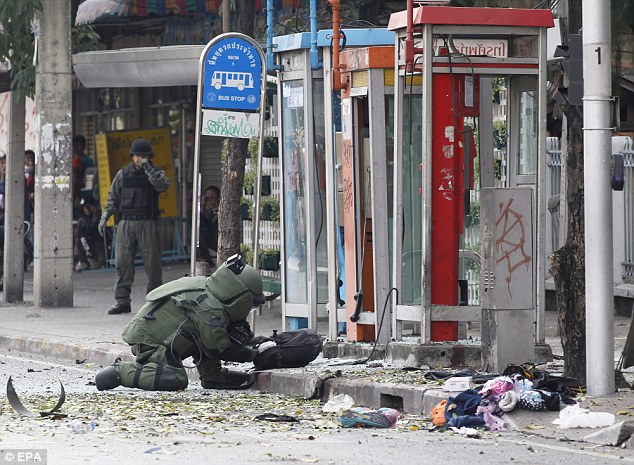Thai Authorites Pledge to Find Culprits Behind Bangkok Bombing
The blast late Monday hit central Bangkok’s commercial Ratchaprasong intersection, close to the popular open-air Erawan Hindu shrine. Those killed in the explosion include at least three Chinese, two Singaporeans, one Philippine national and two Hong Kong residents, a reflection of the shrine’s popularity among Asian tourists.
Arriving at the scene shortly after the explosion, VOA correspondent Steve Herman saw bodies covered in white sheets and human remains strewn on the street.Thai officials say the pipe bomb attack was aimed at discrediting the military-backed government and damaging the country’s economically important tourist industry.
Since the blast, there have been rumors of more explosive devices in downtown Bangkok, but none have been confirmed.
On Tuesday morning, the streets next to Monday’s bombing site were closed as authorities finished gathering evidence and cleaned up.
Residents and visitors were somber.
Australian tourist Grace Evans from Queensland said the bombing occurred less than two kilometers from her hotel and has left her deeply upset.
“It’s just too close to home. I mean we could have been at that shrine as far as I’m concerned. We went past it – we could have been [there], because we do those kind of things – we go to temples, we do that kind of thing. Hopefully….. I just feel in my heart there is more to come, I really do, and that’s why I really, really want to go home,” she said.
The Erawan shrine is located on one of the capital’s busiest intersections, across the street from Bangkok’s police headquarters. The city’s two elevated train lines both pass above the shrine, while a steady stream of tourists and worshippers make offerings and take photos throughout the day.
While Thai authorities say they have not confirmed who was behind the attack, they did not rule out a link with the country’s turbulent domestic politics.
The shrine’s location is close to areas that have been occupied over the years by different political factions opposing the ruling government.
In 2010, government opponents occupied the area for weeks until the army violently pushed them out, which led to several deaths and arson attacks on nearby shopping centers. The area was again occupied by another group of anti-government demonstrators in 2014, which led to the removal of the government led by Yingluck Shinawatra and then the military coup.
For over the past year, Thailand’s military government has banned protests and suspended democracy, while insisting that the country is not yet ready for another election.
VOA’s Chris Hannas contributed to this report.


